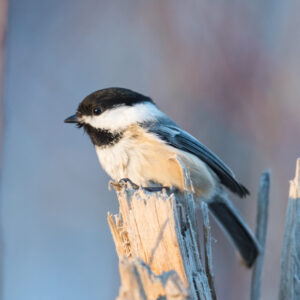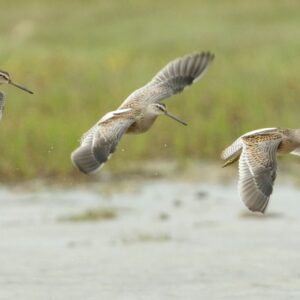Meet Anna’s Hummingbird, a cold-dwelling, not-so-fair-weather feathered friend
What’s smaller than a ping pong ball, lighter than a nickel, and emerald-pink-shimmery all over? Anna’s Hummingbird! This bird was named after the 19th-century Italian duchess Anna Massena.
Males sing a raspy metallic-sounding song and can be identified by their iridescent patches of throat plumage called a gorget.
You might see them as colourful blurs whizzing through the air, perched above your head in shrubs and trees, or if you’re lucky, diving nearly 40 metres during courtship displays. You’re most likely to see Anna’s Hummingbirds at a feeder filled with one part sugar to four parts water, or near big, colourful flowers.
Anna’s Hummingbirds are…
A Cold-dwelling, Not-so-fair-weather Feathered friend
Anna’s Hummingbirds are some of the most common—and hardy—hummingbirds that live along the Pacific Coast. This colourful bird is one of only three hummingbird species that live permanently in Canada and the United States.
These birds brave the winter along the Pacific Coast, which sets them aside from other hummingbirds. When it gets cold outside, Anna’s Hummingbirds enter a state called torpor, a kind of semi-hibernation during which their heart rate and breathing slow. During torpor, they can have body temperatures as low as about 9 degrees Celsius.
Beginning in the 1950s, these colourful birds have expanded their breeding range in two directions: north and east. They adapt well to suburban areas, especially gardens, open woods, coastal sage scrub, and even urban parks.
A Canadian Species on the Rise
Unlike so many species in Canada that are declining due to habitat degradation or loss, climate change, pollution, and other factors, Anna’s Hummingbird populations in Canada have risen dramatically since 1970. Some scientists believe that this population growth is partly thanks to hummingbird feeders that keep Anna’s Hummingbirds going throughout the year, especially during cold seasons.
An important pollinator, BEE-lieve it or not!
If you’re lucky enough to see an Anna’s Hummingbird feeding, you might see them dusted with pollen—yellow or white flakes at the base of their bills or on their foreheads.
Feeding so often on wild flowers, Anna’s Hummingbirds are busy pollinators, especially for chaparral flora where plants grow in the winter with flowering patterns that match the breeding and feeding patterns of this species. They deliver pollen from flower to flower as they fly and feed, helping to spread the plants that they need for survival.
Fun Facts about Anna’s Hummingbird:
A group of hummingbirds can be called a hover, a bouquet, a glittering, a shimmer, or a tune of hummingbirds.
Hummingbirds can’t walk or hop like most birds; they can only shimmy sideways while perched.
A healthy Anna’s Hummingbird usually has a very hot body temperature of about 42 degrees Celsius.
Hummingbirds are the closest direct living descendants of dinosaurs like T. rex.
Stay up to date with the latest in Canadian nature by subscribing to our emails. You’ll receive regular updates about what we’re doing to protect species like Anna’s Hummingbird, and how you can help.



